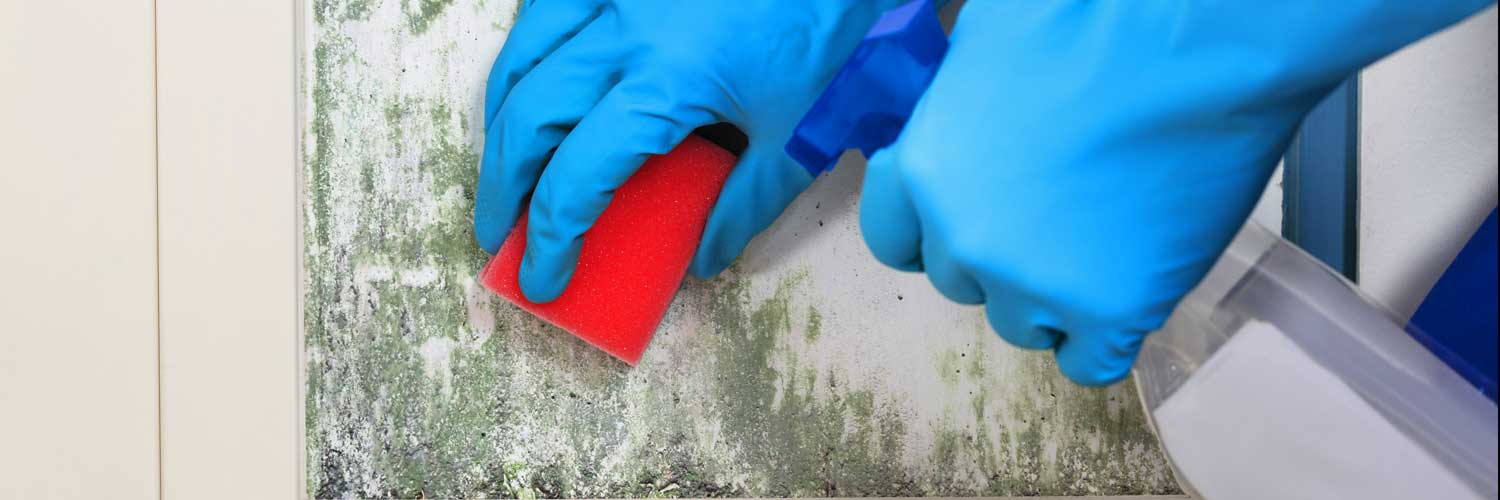What Causes Mold on Interior Walls and How to Stop it


You can’t miss it -- the dark-colored flecks that start to form where mold is present.
You know that moisture inevitably leads to mold, but it’s starting to form on your interior walls. So, what’s causing the moisture in your wall, and how do you prevent it?
You know moisture causes mold, but did you know your current insulation could be contributing to the problem? RetroFoam has been helping homeowners deal with issues like this for more than 35 years.
In this article, we’ll discuss the ways you can identify mold in your home besides just seeing it, what causes the condensation on your walls, and how to prevent that moisture from forming.
How to Identify Mold in the Home
If there is black mold in your home, there are a few ways you can identify it.
From actually seeing it to smelling it, here’s how to identify mold in a home.
Smelling a Musty Odor
Have you noticed a weird musty smell throughout your home?
That weird odor is coming from the mold and mildew that is growing in your home. You may not see it, but that doesn’t mean it’s not there, especially if you have had any moisture on your walls.
If you notice that musty smell, especially if you’ve noticed condensation on your interior walls, you should take a look to see if mold is beginning to form.
Allergic Reactions Inside the Home
Are you experiencing allergies inside your home even when it’s not allergy season?
There is the possibility that mold is growing in your home.
Common reactions to mold include sneezing, sore eyes, and nasal issues, according to Moldpedia.
Actually Seeing the Mold on the Walls
Seeing those telltale black spots is the easiest way to identify mold on your walls.
The biggest problem with actually seeing the mold on your walls is thinking that it’s something else. Many times homeowners see the dark spots and assume it is dirt or dust.
If the mold continues to grow without being checked, it can become a much more severe issue.
Illness Caused By Black Toxic Mold
Not all black mold is toxic, but the Stachybotrys chartarum is and can cause serious health problems.
Symptoms you may experience if you have black toxic mold in your home are headaches, trouble concentrating, shortened attention span, memory loss, and dizziness. If you are experiencing any of these symptoms, you should immediately seek medical attention.
Condensation Causing Mold on Walls
Condensation in a home, if gone unchecked, will lead to the formation of mold and mildew.
Here are some things to look out for when trying to identify condensation.
Rusty Indoor Pipes
Are the pipes in your home rusting?
That rust is a good indicator that the pipes are coming in contact with condensation.
One issue here is if the pipes are in your wall. This makes it hard to see if they are coming in contact with condensation that is forming inside the wall.
Condensation on the Inside of Your Windows
If you’re noticing condensation on your windows, you might think it’s not a big deal, but it’s actually a symptom of a bigger problem.
While you see that condensation on the actual window, where you don’t see it is in the cavity around the window.
That moisture in the window cavity can lead to the growth of mold and mildew.
Condensation Forming on the Walls
Much like your windows, seeing condensation on your walls is a much more severe problem.
The condensation isn’t just on the surface. It’s actually inside the wall assembly. This includes being inside the old insulation in the wall as well.
High Humidity Levels in Your Home
If your home feels like a sauna, then your humidity levels are too high.
That humidity is a sign that condensation and moisture are lurking somewhere in your home.
If you install a dehumidifier in your home, you can greatly reduce that humidity and reduce the possible growth of mold. You want the relative humidity in your home to be between 30 and 50 percent.
Preventing Moisture in Homes Causing Mold
Now you know that condensation in the home is what is causing mold to form on your walls.
But, how do you prevent that moisture in your home and the mold from forming?
The best way to prevent that moisture on interior walls is to stop the outdoor temperature from meeting your indoor air. You can do this by adding insulation in your walls that acts as an air barrier.
Creating an air seal in your exterior walls, like with injection foam insulation, will stop air movement into and out of your home. It will prevent the extreme hot or cold outdoor temperatures from meeting with your conditioned air in the wall cavity and forming condensation.
Think of a pop can when you pull it out of a cooler on a hot summer day. The can starts to sweat because the soda inside is cold and the air outside is hot. This is essentially what happens in your walls when those two temperatures meet.
When the condensation starts to form, it clings to your drywall and the old traditional insulation you may have in the wall cavity. This becomes a breeding ground for the mold.
Creating the air barrier I mentioned above prevents this from happening, keeping your home happy and healthy.
If you’d like to learn more about creating an air seal with injection foam insulation in your walls, check out the Learning Center on our website.
Related Articles
What Causes Condensation on Walls in a Home?
Comparing RetroFoam vs. Fiberglass vs. Cellulose Insulation Performance
What is the Best Type of Insulation for Insulating Existing Walls?
About Amanda Emery
Amanda previously has worked as a breaking news and crime reporter, TV news producer, and editor. As a journalist, she has won several awards from The Society of Professional Journalists - Detroit Chapter and the Michigan Press Association. Amanda uses her experience as a journalist to write content that will help educate homeowners on foam insulation benefits. When Amanda isn’t writing, she’s spending time with her husband Chris, daughter Lilith-Maeve, and rescued huskies Danger and Wendigo. She also loves knitting, making art, and cooking.



